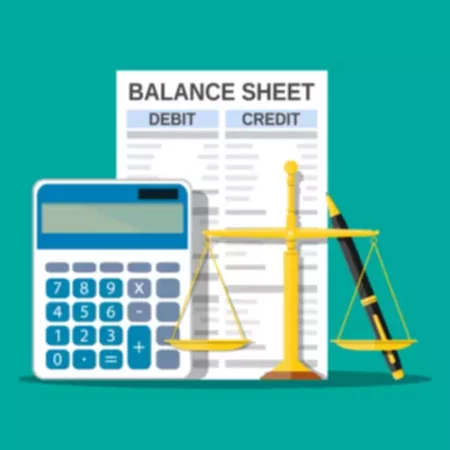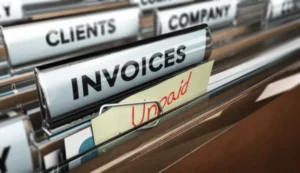Accounting is the language of business. Business owner/s, investors or any interested parties can understand that business by looking at the accounting reports. There are tons of accounting reports, the two main accounting reports that are the biggest picture reports and are required if you want to buy or sell a business, get a loan, or do anything having to do with the monetary value of a business are the Profit & Loss Statement and the Balance Sheet. In this article, we will explore the second one.
What is a Balance Sheet?
Balance sheets may be less exciting than profit and loss accounts but they contain vital information for investors and help to assess the business risk. The Balance Sheet tells the value of a particular company. A simple way to explain it is your bank account. Does your bank tell you how profitable you are? It gives you the value of your bank account. Moreover, you can only look at the value of your bank account on any given day.
You would look at your bank account balance value at a certain moment in time in order to know what the value of your bank account is. This is exactly what a Balance Sheet does, only it represents the whole business. If, on the other hand, you wanted to know your profitability, you would look at the deposits and withdrawals over some time. This is where an Income Statement would come in.
Example Balance Sheet
As you can see from an illustration below, the reports are always structured the same. The business name goes first, the name of the statement second, and for a Balance Sheet, we would insert the date that this Balance Sheet is for – as of XYZ date. The Balance Sheet has three sections: Assets (things we own) = Liabilities (things we owe) + Owner’s Equity. Thus, this statement represents the accounting equation. As you can see from the report, the total Assets ($) and the total Liabilities & Owner’s Equity are the same.

Balance Sheet Structure
Now, let’s take a closer look at these accounts. One concept you need to be aware of is the short term and long term: something is short term if it has to do with less than a year, and things are long term if they are more than a year. With Assets, we have Current Assets (short-term). These are listed in the order of liquidity, which is how quickly it can become cash.
- Bank balance – represents cash you own on a given date.
- Accounts Receivable – money customers are going to pay for the work already done or goods already received, which you recorded as revenue on your Income Statement. You have done everything you needed to do to earn that money and are just waiting for them to pay you.
- Pre-paid Expenses – what happened here is that you paid money from your bank account on expenses, but you cannot deduct those expenses yet on your Income Statement. Instead, you record it here until it will be moved to the Income Statement because you technically have that value in your business – that other company has not earned your prepaid expenses yet and would have to give it back if they do not fulfill their promise.
- Inventory – inventory would take the longest to turn into cash, so it is listed last.
Next, you have Fixed Assets, which represent any asset that has a life of more than a year and you plan to use it for more than a year. These are things like building, office furniture, and equipment of any kind. Fixed assets remain on your books on your purchase cost basis. Your business also gets to take a depreciation expense to deduct fixed asset cost over time. This depreciation is represented as a total depreciation expense to date and reflected as an Accumulated Depreciation. This amount will reduce the total amount of Fixed Assets.
Next, you have a section for Liabilities. As with Assets, it is subdivided into long-term items and short-term items. The Current Liabilities section usually has items like:
- Unearned Revenue – these are items that customers paid you in advance. In this case, you have a liability to perform whatever you do to earn that money.
- Accounts Payable – these are money your business owes to vendors for items or services bought on credit.
- Short-term Loans – these are loans your business took, but unlike mortgages, it has to repay them within a year.
Any liabilities, such as Working Capital Loan or Mortgage, that you will have to pay over a longer period will be written under the long-term section.
Finally, the Owner’s Equity would have your Retained Earnings account and Owner’s Capital account. The Retained Earnings account reflects earnings that the company has made to date, so it is an accumulated account. This is how the Income Statement gets to the Balance Sheet.
Any money that the owner or shareholders put into the business and any money that they take out of the business will be tracked in the Contributions and Draw accounts and the total will be represented on the Balance Sheet under Owner’s Capital.
How do Balance Sheets Work?
The balance sheet reflects the company’s financial state during a given period. Company owners, investors, and the management may use it to understand the business’s state better. However, shareholders and potential investors need several balance sheets to see whether the business is successful or has problems.
Investors and creditors can also use various ratios from the balance sheet to check the business’s financial health. For instance:
- debt-to-equity ratio;
- acid-test ratio (or quick test ratio);
- current ratio;
- earnings per share;
- return on equity ratio;
- profit margin;
- working capital ratio.
In accounting, there is a specific equation to calculate a company’s assets and reflect them on the balance sheet. A bookkeeper or an accountant must add assets on one side and liabilities + equity on the other. Here’s the equation:
Liabilities + shareholders’ equity = assets
It’s a straightforward formula since a company has limited options when buying something. The business may borrow money (liabilities) or request funds from investors (shareholders’ equity).
Typically, investors compare a company’s balance sheets to those of other companies — the same as with financial statements of different businesses within the same industry.
Limitations of Balance Sheets
Undoubtedly, the balance sheet offers valuable insight into the company’s financial health. However, it has some limitations. The balance sheet alone doesn’t reflect a full picture of the business’s financial state. For that reason, some investors prefer to use other additional means of analyzing the company’s financial health.
There are other balance sheet limitations:
- Misstated long-term assets. The company uses long-term ones for longer periods than short-term property. The balance sheet records the value of these items at a price paid for them. However, unlike the financial statement, the balance sheet ignores the item’s current value, which is a limitation.
- Focusing on a specific date. The balance sheet has to reflect the company’s financial state during a specific period. Often the business’s management or the owners cover all liabilities on the last date to manipulate the company’s financial health.
- Requires comparison. Unlike the financial statement, the balance sheet must be compared with previous ones.
- Missing critical assets. The balance sheet reports only those items that a company acquires by transactions. Unlike the financial statement, a balance sheet omits some valuable items.
That’s why some businesses, investors, and stakeholders prefer using other means of analyzing progress. For example, the balance sheet outlines the company’s assets and liabilities, whereas the financial statement reveals the overall company’s fiscal health.
Who Should Prepare the Balance Sheet?
It depends on the type of company. You may take care of the balance sheet if you own a small business. If you have no experience, consider asking for the aid of a professional bookkeeper.
Mid-sized companies may require more help due to a higher data volume, so they may need the aid of professional accountants. Typically, big corporations have accounting departments that take care of this task.
Public companies must organize regular external audits performed by a CPA (a certified public accountant). Moreover, public companies must adhere to strict rules and prepare their documentation according to GAAP (Generally Accepted Accounting Principles).
Public companies regularly prepare various statements and file them with the Securities and Exchange Commission (SEC).
Why is the Balance Sheet Important?
Even though the balance sheet has some disadvantages, like omitting essential property, it still offers a valuable insight into the company’s financial health. It reflects the business’s liabilities, shareholders’ equity, and other valuable accounting information.
A simple balance sheet analysis can show whether the company has more assets or liabilities. The management uses the balance sheet alongside two other critical statements, such as the cash flow and income statements. It allows users to get answers to the following questions:
- Does the business have a positive net worth?
- Does the company have enough cash?
- Does the business have enough property to cover obligations in case the lender asks to repay the debt?
- How indebted is the company compared to other businesses in the industry?
Companies with higher value of the property (including machinery and equipment) are generally more successful since they can repay their debts. However, it’s not the only criteria to evaluate a business’s financial state, but it helps to understand the overall situation better.
Learn more about the classified balance sheet in our blog and how to make a balance sheet in our blog.
Learn how balance sheet vs income statement differ.

















